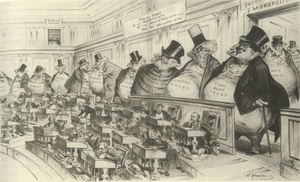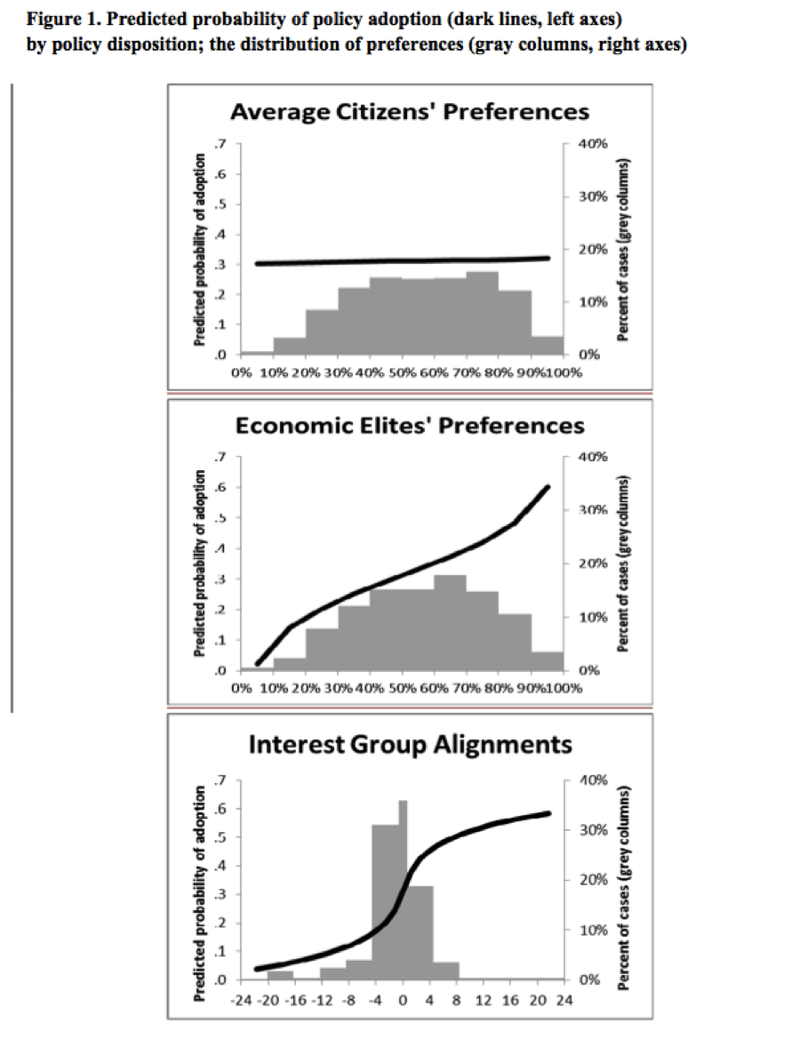American Oligarchy: How the preferences of elites shape policy outcomes

At Sunlight we spend a lot of time trying to make sense of who has a say in the policy making process, and whose perspective is being heard. Time and time again we find that well-organized corporate interests are far more involved in the process than ordinary citizens, or the underfunded groups that seek to represent them.
Now, a recent paper — forthcoming in Perspectives on Politics by political scientists Marty Gilens of Princeton and Benjamin Page of Northwestern — has provided some really striking empirical evidence that the kinds of imbalances we have observed anecdotally in our work at Sunlight are actually systematic features of modern American democracy. The preferences of economic elites and business interests, according to Gilens and Page, significantly shape policy outcomes — and the preferences of average citizens simply don’t.
Gilens and Page looked at 1,779 high salience policy issues between 1981 and 2002. They compared whether these specific policies were adopted or not dependent on the preferences of median income citizens and wealthy individuals, measured through public opinion surveys and the activities of mass-based and business-oriented interest groups.
They found that the percentage of average citizens who favored a policy being enacted had no demonstrable effect on the likelihood that the policy would pass. The top chart in the figure below demonstrates this finding: As the percentage of citizens supporting a policy increases, the likelihood that that policy will pass does not increase – the line is horizontal.
Conversely, the second chart indicates that elites are very influential: As the percentage of economic elites favoring a policy increases, the likelihood that the policy will be adopted increases as well.
The final chart in the figure below shows that policies are unlikely to be adopted when many powerful interest groups are aligned against them.

As Gilens and Page summarize their findings: “Economic elites and organized groups representing business interests have substantial independent impacts on U.S. government policy, while mass-based interest groups and average citizens have little or no independent influence.”
The mechanisms behind the outsized influence of elites are still not well known. Of course at Sunlight, we think lobbying and campaign finance are pretty important parts of this story. One way to think about the elite domination story is to consider the vectors of influence that elites have over policy makers. In our “1% of the 1% study,” we found that just 31,000 people contributed 28% of all the (traceable) money in the 2012 cycle. It’s a good guess that these folks have the ears of the politicians whose campaigns they fund. As Sen. Chris Murphy, D-Conn., noted while speaking about raising money from big donors, “I talked a lot more about carried interest inside of that call room than I did in the supermarket.”
This is really important work, and provides empirical backing to how we have suspected politicians respond to conflicting policy preferences and pressures. This work suggests at least as many interesting research questions as it answers, and we look forward to seeing where Gilens and Page take it.

